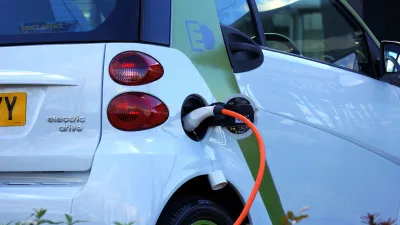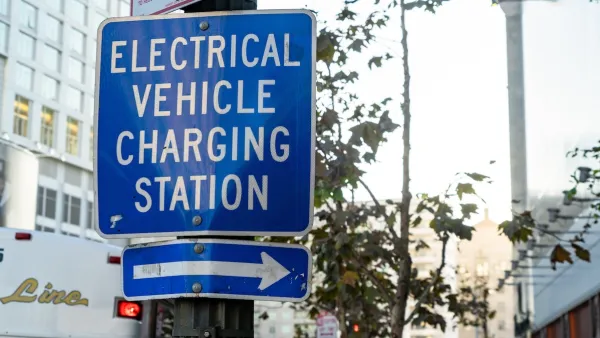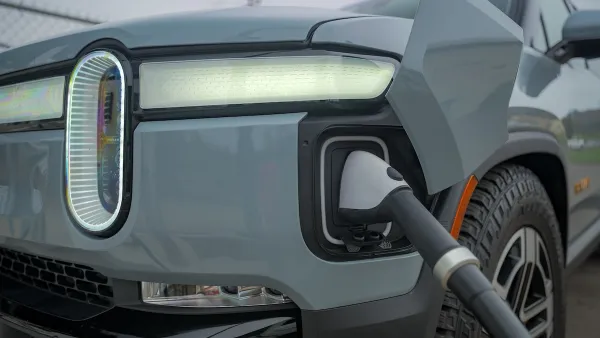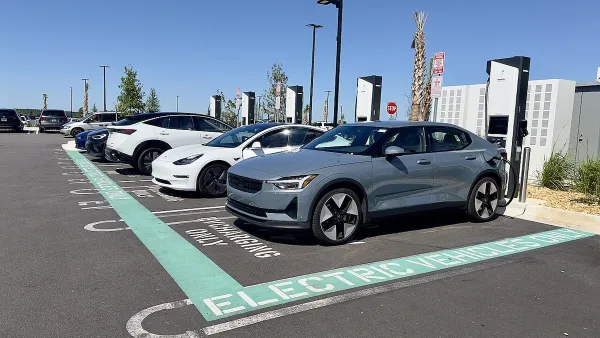The city wants to install a network of more than 3,000 charging stations, with a focus on underserved communities.

"By 2025, the city of Sacramento wants 75,000 zero-emission vehicles on the road, according to a city plan adopted in 2017," writes Isabella Bloom. "It estimates it needs 3,800 charging stations to support that kind of fleet. As of 2020, the city had installed fewer than 700 charging stations," most in dense areas near government offices and freeways. Meanwhile, rural areas and "zip codes with higher percentages of non-white residents" have the fewest charging stations.
Gil Tal, the director of the Plug-in Hybrid and Electric Vehicle Research Center at the University of California, Davis, urges prioritizing these areas. "Disadvantaged communities many times suffer from bad air quality because they are next to traffic routes or next to industry or just less desirable locations," says Tal. "Electrifying these areas are, I think, higher priority, not just because of greenhouse gases, but also because of local air pollution."
While most electric vehicle owners rely on charging their cars at home, "many low-to-moderate-income people who live in apartments or affordable housing may find installing and accessing charging infrastructure is more complicated." Encouraging more widespread EV use in these communities means providing ready access to chargers for residents of multi-unit buildings. "The city recently received a $1.8 million grant from the California Energy Commission that will allow it to provide Level 2 chargers at 13 community centers and libraries, primarily in low-income neighborhoods, including Coloma and Colonial Heights." Sacramento has also introduced an electric car sharing program "to introduce more electric cars and stations to low-income neighborhoods" and passed an ordinance that "will require new nonresidential and multifamily developments to include electric vehicle infrastructure."
Statewide, "[t]he California Energy Commission estimates the state needs 1.2 million public and shared private chargers by 2030 to support the number of electric vehicles expected to be on the road by then."
FULL STORY: Sacramento wants 3,800 car charging stations by 2025. Here’s where they’re needed

Analysis: Cybertruck Fatality Rate Far Exceeds That of Ford Pinto
The Tesla Cybertruck was recalled seven times last year.

National Parks Layoffs Will Cause Communities to Lose Billions
Thousands of essential park workers were laid off this week, just before the busy spring break season.

Retro-silient?: America’s First “Eco-burb,” The Woodlands Turns 50
A master-planned community north of Houston offers lessons on green infrastructure and resilient design, but falls short of its founder’s lofty affordability and walkability goals.

Test News Post 1
This is a summary

Analysis: Cybertruck Fatality Rate Far Exceeds That of Ford Pinto
The Tesla Cybertruck was recalled seven times last year.

Test News Headline 46
Test for the image on the front page.
Urban Design for Planners 1: Software Tools
This six-course series explores essential urban design concepts using open source software and equips planners with the tools they need to participate fully in the urban design process.
Planning for Universal Design
Learn the tools for implementing Universal Design in planning regulations.
EMC Planning Group, Inc.
Planetizen
Planetizen
Mpact (formerly Rail~Volution)
Great Falls Development Authority, Inc.
HUDs Office of Policy Development and Research
NYU Wagner Graduate School of Public Service




























